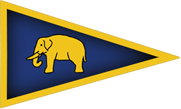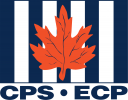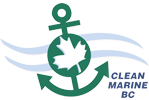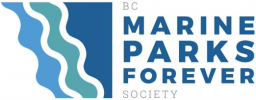Safety Afloat
Safe boating should be the primary concern of all members. The Skipper is legally responsible not only for the safety of the vessel and all persons aboard, but also has a legal responsibility toward other boats and their crews. Although the waters surrounding the Gulf Islands are enjoyably benign, they also have hidden dangers. The Skipper should ensure that all the safety equipment aboard is complete and current according to the current regulations.
Safety Information and Resources
Transport Canada’s Office of Boating Safety provides extensive information on safety and related regulations online (see link to the Office of Boating Safety website in the Links box at right). The publication Safe Boating Guide is available in printed form at the Ganges Coast Guard Station (250-537-5813), or by calling the Boating Safety Info Line at 1-800-267-6687. To download an electronic version of the Safe Boating Guide in PDF format, see the Downloads box at right. Note that a current copy of this guide includes changes to Small Vessel Regulations that came into force in May 2010.
Distress and emergency calls can be made to the Victoria Rescue Coordination Centre at 1-800-567-5111, or on cell phone *311.
The Sailing Club has a team of Safety Officers, whose responsibility is the safety of our marina and grounds, and who can act as resources for our members. They organize an annual Safety Day in the spring and offer safety-related boating courses during some winter months. Contact the Safety Officers here.
Pleasure Craft Operators Card (PCOC)
Under the Pleasure Craft Operator Competency Program, which went into effect in September 2009, no person of any age may operate a powered recreational vessel (including personal water craft and powered dinghies) without a PCOC or equivalent proof of competency. This proof must be carried on board. To obtain the PCOC, visit the Office of Boating Safety website, where a number of BC courses/testing agencies are listed.
Boat Tenders
Boat tenders such as inflatable or rigid dinghies are subject to regulations intended to promote their safe use. A dinghy under six metres in length must carry one Canada-approved personal flotation device for each person aboard, a buoyant heaving line, a manual propelling device or anchor, one bailer or pump, and a sound-signalling device. If the boat is used after sunset, then navigation lights are required.
Radio
All boaters should monitor VHF Channel 16, which the Canadian Coast Guard (CCG) monitors 24 hours a day. This channel is our safety link and is to be used for emergencies and for calling to another boater who, after initial contact, should immediately choose another channel for continuing communication. CCG Victoria can also be contacted by cell phone on *16. Radio checks should be done with the CCG Victoria on Channel 83A. Complete information regarding emergency procedures is contained in the Safe Boating Guide (see Safety Information and Resources above). Anyone operating a fixed or portable VHF marine radio in a pleasure craft is required by law to have a Restricted Operator’s Certificate (Maritime). Industry Canada has delegated the Canadian Power and Sail Squadrons (CPS) the authority to issue this certificate which can be obtained by taking either a seminar or a home-study course. For more information on VHF radio courses, see link to the Canadian Power and Sail Squadron website in the Links box at right.
Emergency Calls on Channel 16
Distress calls
“MAYDAY MAYDAY MAYDAY”
“THIS IS … Vessel name”…“THIS IS Vessel name”…“THIS IS Vessel name”
“MAYDAY … Vessel name … position, nature of distress, kind of assistance needed, any other useful information … OVER”
This should be repeated until an answer is received.
Urgency calls
“PAN PAN” … “PAN PAN” … “PAN PAN”
“ALL STATIONS” … “ALL STATIONS” … “ALL STATIONS” … (or specific station)
“THIS IS … Vessel name … Problem … Request … Vessel name … OVER”
Safety calls
“SÉCURITÉ” … “SÉCURITÉ” … “SÉCURITÉ”
“ALL STATIONS” … “ALL STATIONS” … “ALL STATIONS”
“THIS IS … Vessel name” … “THIS IS … Vessel name” … “THIS IS … Vessel name”
“SAFETY MESSAGE … Listen (working channel)”… followed by the safety message (broadcast on the working channel as follows):
“SÉCURITÉ”… “SÉCURITÉ” … “SÉCURITÉ”
“ALL STATIONS” … “ALL STATIONS” … “ALL STATIONS”
“THIS IS … Vessel name” … “THIS IS … Vessel name” … “THIS IS … Vessel name”… details of safety message … OUT”
Weather
Current and forecast weather information for our area can be obtained from AES Weather Radio 162.4 MHz, or from Victoria Coast Guard Radio on VHF Channel 21B (WX3), by calling 1-604-666-3655, or online from the Government of Canada Weather Office.
These are terms used for wind strengths in the forecasts:
| Light winds | 0–11 knots |
| Moderate winds | 12-19 knots |
| Strong Wind Warning | 22-33 knots |
| Gale Warning | 34-47 knots |
| Storm Warning | 48-63 knots |
Charts
The following chart package in atlas format, and four large-scale charts, cover the Gulf Islands area:
| 3313 | Gulf Islands (Victoria to Nanaimo) |
| Small Craft Charts at various scales | |
| 3440 | Race Rocks to D’Arcy Island – 1:40,000 |
| 3441 | Haro Strait, Boundary Pass and Satellite Channel – 1:40,000 |
| 3442 | North Pender Island to Thetis Island – 1:40,000 |
| 3443 | Thetis Island to Nanaimo – 1:40,000 |
The following publications are needed as well:
Canadian Tide and Current Tables
Sailing Directions
Collision Regulations
Canadian Aids to Navigation System
Pacific Coast: List of Lights, Buoys and Fog Signals
Holding Tanks
Pleasure craft in Canada now must comply with Prevention of Pollution from Ships and for Dangerous Chemicals regulations. As of May 2012, these regulations require that all boats fitted with toilets be equipped with either a holding tank or a marine sanitation device.
Discharge of untreated sewage is now prohibited in Canadian inland waters and in coastal waters within 3 nautical miles of land. Pleasure craft holding tanks must be emptied at approved pump-out facilities. Treated discharge from Marine Sanitation Devices must meet strict coliform counts.
In coastal waters where pump-out facilities are not available, and where compliance with the prohibition for untreated discharge within 3 nautical miles of land is not feasible, sewage may be discharged while the vessel is en route if certain practices are followed to minimize pollution. Consult the Transport Canada website (see link in the Links box at right) for the full text of regulations.
There are a number of designated sewage areas on the BC coast where discharge is strictly prohibited. These currently include:
| Carrington Bay | Cortes Island |
| Cortes Bay | Cortes Island |
| Manson’s Landing & Gorge Harbour | Cortes Island |
| Montague Harbour | Galiano Island |
| Pilot Bay | Gabriola Island |
| Prideaux Haven | Desolation Sound |
| Roscoe Bay | West Redonda Island |
| Smuggler Cove | Smuggler Cove Marine Park |
| Squirrel Cove | Cortes Island |
The Saltspring Island Sailing Club prohibits sewage discharge from boats at its docks. For a small fee, holding tanks can be emptied at the public breakwater pumpout station in Ganges Harbour.





